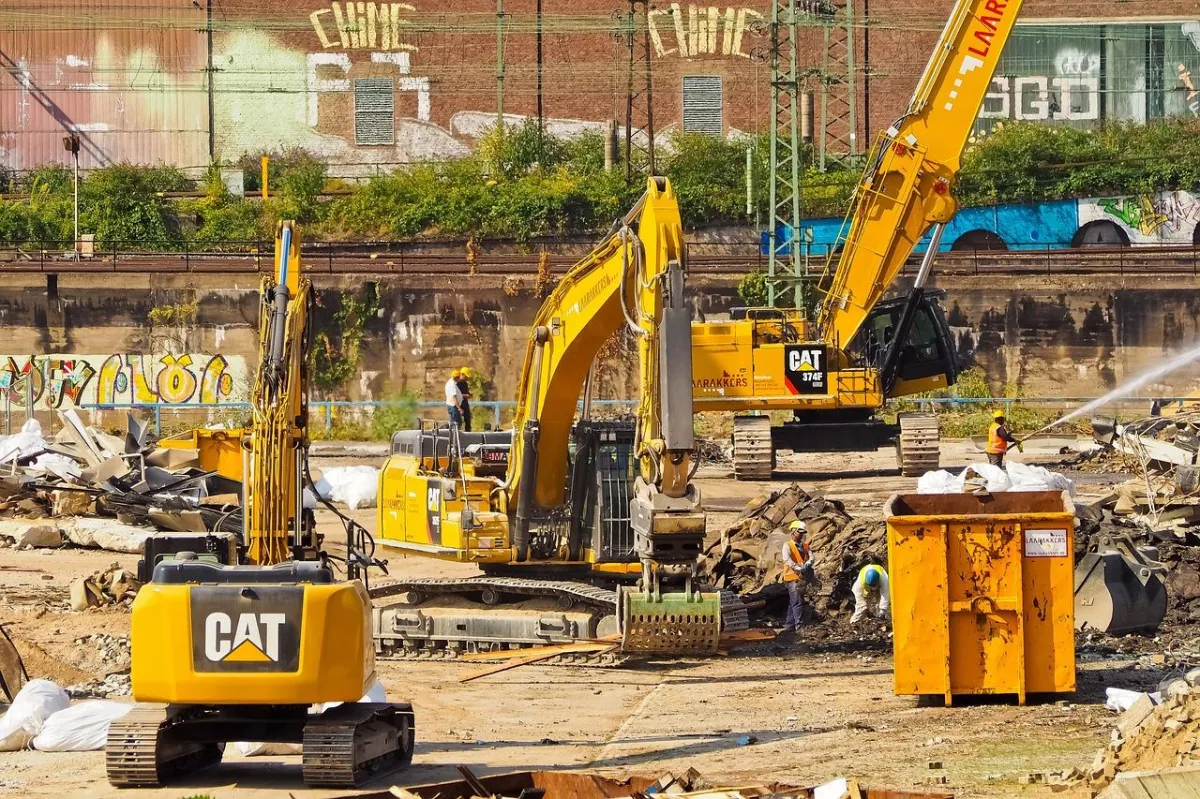Licensed, Bonded & Insured | Family Owned & Operated
049-012803 IL | IL Pumping License: 054-021753 | IA Pumping License: 12839
22 YRS. EXPERIENCE, FULL SITE PREP EXPERTS - HOW CAN WE HELP?

Navigating Regulatory Hurdles: A Comprehensive Guide to Site Preparation Permits in Illinois
Undertaking any construction or development project in Illinois requires more than just a vision and a blueprint. The state's complex regulatory landscape demands a meticulous approach to site preparation, involving a myriad of permits and approvals. Navigating these regulatory hurdles is a crucial aspect of any successful project. In this article, we will delve into the multifaceted world of site preparation permits in Illinois, shedding light on the key considerations, challenges, and strategies that can help developers and construction professionals maneuver through the process effectively.

Understanding the Regulatory Framework
Illinois boasts a rich and diverse environment, from its urban landscapes to its natural wonders. Consequently, the state has established a robust regulatory framework to ensure responsible and sustainable development. When embarking on a site preparation journey, it is vital to comprehend the various levels of regulations that may apply. These encompass federal, state, and local ordinances, as well as specific regulations tied to environmental conservation, zoning, and land use.
Federal Regulations: The Clean Water Act and Beyond
At the federal level, the Clean Water Act (CWA) is a cornerstone of environmental protection. The CWA ensures that activities that discharge pollutants into waters of the United States, including wetlands and streams, adhere to specific guidelines. This necessitates obtaining permits such as Nationwide Permits (NWPs) from the U.S. Army Corps of Engineers. Developers must demonstrate their commitment to minimizing impacts on aquatic resources, a process that often involves mitigation measures like wetland restoration.
State-Level Regulations: Stormwater Management and Beyond
Moving to the state level, Illinois maintains stringent stormwater management regulations. The Illinois Environmental Protection Agency (IEPA) administers the National Pollutant Discharge Elimination System (NPDES) program, which requires construction site operators to obtain permits for stormwater discharges. Implementing effective erosion control and sediment management measures is imperative to prevent soil runoff and protect water quality.
Moreover, Illinois is known for its unique geological features, including karst landscapes. Developers working in karst-prone areas must consider additional regulations to prevent potential sinkhole formation, which could jeopardize the stability of construction sites and surrounding areas.
Local Ordinances: Zoning, Land Use, and Beyond
At the local level, municipalities have their own zoning codes and land use regulations that influence site preparation projects. Zoning ordinances dictate how land can be used and developed, covering aspects such as setbacks, building heights, and permitted land uses. Developers need to ensure that their projects align with the specific zoning requirements of the locality.
Challenges and Strategies
Navigating the intricate regulatory landscape of site preparation in Illinois is not without its challenges. One of the key hurdles is the potential conflict between conservation and development goals. Balancing economic growth with environmental preservation is a delicate act that requires creative solutions.
Integrated Planning and Design: Embracing Sustainability
Developers can proactively address regulatory challenges by embracing sustainable site planning and design principles. By integrating green infrastructure, such as permeable pavements and rain gardens, into their projects, developers can enhance stormwater management while complying with environmental regulations. Sustainable designs also often contribute to LEED certification, showcasing a commitment to environmental stewardship.
Early Engagement with Regulatory Agencies
Early engagement with regulatory agencies can be a game-changer in the permit acquisition process. Seeking pre-application meetings and consultations with relevant agencies can provide developers with valuable insights into potential challenges and mitigation strategies. Establishing clear lines of communication from the outset can lead to smoother interactions and quicker approvals.
Professional Expertise: Enlisting Consultants
Given the complexity of the regulatory framework, many developers opt to enlist the expertise of environmental consultants, legal professionals, and engineering firms. These experts can guide project teams through the intricacies of permit applications, ensuring that all required documents are submitted accurately and on time. Their in-depth knowledge of the regulatory landscape can streamline the process and help avoid costly delays.
Conclusion: In the realm of site preparation in Illinois, obtaining the necessary permits and approvals is a critical phase that demands careful attention and thorough understanding. From federal mandates to local zoning codes, the regulatory landscape is intricate and multifaceted. Successfully navigating this complex terrain requires a proactive approach that embraces sustainable practices, fosters collaboration with regulatory agencies, and leverages the expertise of professionals.
As Illinois continues to evolve, the intersection of development and conservation will remain a central theme. By embracing the challenges and opportunities presented by the regulatory framework, developers can shape a future where growth and environmental stewardship coexist harmoniously. Through diligent preparation, an informed perspective, and a commitment to compliance, site preparation in Illinois can set the stage for projects that enrich communities while safeguarding the state's natural treasures.

Excavation Marketing Pros
Excavation Marketing Pros is dedicated to the success of excavation and septic companies.

AVOID COSTLY MISTAKES:
Do NOT hire an excavating contractor without first reading our free guide:
The ULTIMATE Excavation & Septic "Success Guide."

We Offer Excavation Services NearYou!
If you don't see your specific area, contact us and we may still be able to help or give a referral.
Serving cities & towns nearby:
All rights reserved | Privacy policy


